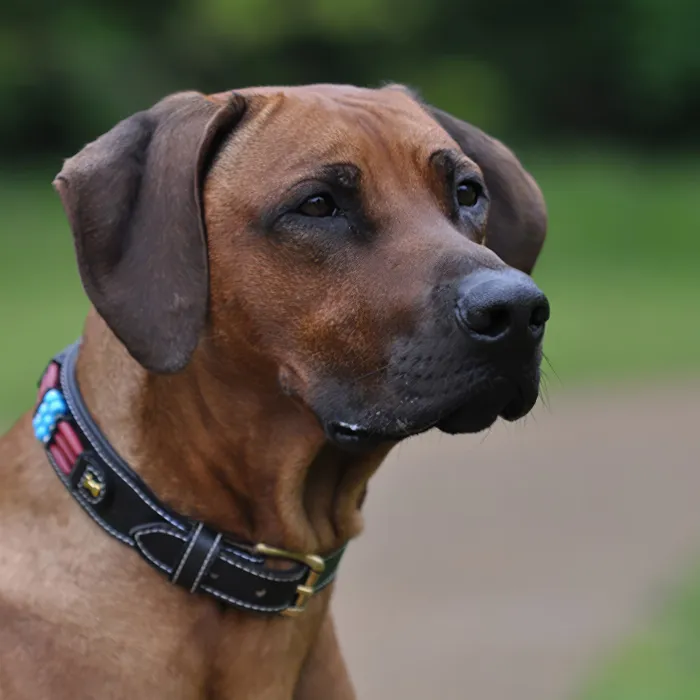Part 01 - Introduction: Animal motif - beastly good!
Part 02 - The right equipment
Part 03 - The main problems: light & sharpness
Part 04 - It's all about the detail!
Part 05 - Shooting preparations and planning
Part 06 - Dog photography
Part 07 - Cat photography
Part 08 - Horse photography
Part 09 - Small animal photography
Part 10 - Indoor shoots - studio photography
Part 11 - Outdoor shootings
Part 12 - Image editing
Part 13 - Various general tips
Part 14 - Reptile photography
My name is Nicole Schick and my greatest passion is animal photography. As a hobby photographer, I travel to exhibitions, horse shows and other animal events. I carry out indoor and outdoor shoots with large and small four-legged friends and the focus of my work is of course always on the subject. In my tutorial series, I would like to tell you a bit about my hobby and my experience as an animal photographer. I hope you enjoy reading it and would be delighted if you can take something away from it for yourself and your work. I'm trying to read as much as possible about digital photography and to make progress with self-study. But even I am only at the beginning of a long journey.
1 Introduction
Among the many things that have inspired people for a long time, there are two that combine wonderfully! Creativity is what drives the photographer, always tempting him with new challenges. Only one goal in mind. His mission: to capture a wonderful moment in a picture. That is the enthusiasm of photography! The passion to want to capture things that captivate us forever.
The photographer is most likely to look for a motif that inspires them! For some, the camera will take them through some deserted stretches of countryside, for others to the big city.
But let's move on to the actual topic of this tutorial and my desire to bring you a little closer to wildlife photography. Animal photography is becoming more and more popular. Statistically speaking, every second household has a pet and every third person in Germany lives with an animal. Around 23 million pets live in our country. And the trend is rising. And that's not even counting aquarium fish and terrarium dwellers! In terms of popularity, cats are in first place with over 7 million, followed by the "little ones" (guinea pigs, rabbits, etc.) with almost 6 million and - of course, man's best friend - the dog, just behind with around 5.0 million.
So if you enjoy photography and can also call your own animals your own, you will very often use your four-legged friends as motifs. If you need a few tips or are completely new to animal photography, I would like to show you a few things in my tutorial to make this a little easier and perhaps even a little better.
2. animal etiquette
In the following, I would like to list a few points that everyone who works with animals should know and observe. They simply have to precede this tutorial, even if most of them are actually self-evident.
a) The nuts and bolts of animal photography: the subject
The most important thing in animal photography, regardless of whether the photographer is photographing other people's animals or their own, whether as a hobby or professionally: The well-being of the models in front of the camera! This is the be-all and end-all on the way to the perfect shot. They are not two-legged creatures that the photographer can tell in which pose they would like to be photographed. Of course he may try, but he will certainly not get more than the mockery of the pet owner. Have you ever tried to persuade a cat to do something? Yes? Then you know what I mean. What I'm saying is that the animals didn't make the decision to undergo a photo shoot themselves. No. It was their masters and mistresses.
And maybe Wauzi is just having a bad day. What's more, he's probably in a completely unfamiliar environment. And as if all that wasn't enough, someone comes running up with a strange device in their hand that makes strange noises. Under these circumstances, it is predictable that the "patient" may quickly feel uneasy or even afraid.
But the last thing a photographer wants is a frightened animal or one that is getting ready to flee. Because no matter what Photoshop offers, the shot will never show the desired result. The animal owner will never be happy with the photos! The welfare of the animals must therefore always be an omnipresent consideration when taking photos. The four-legged friends are very lucky that the photographer has to take this into account just to get good shots. The customer is king. The furry friend is the emperor. At least when it lands on my photo table. Then the photos work out all by themselves.
The cat in this picture feels uncomfortable. She has crouched down and is waiting for the next moment to jump off the table. Her facial expression is anything but relaxed.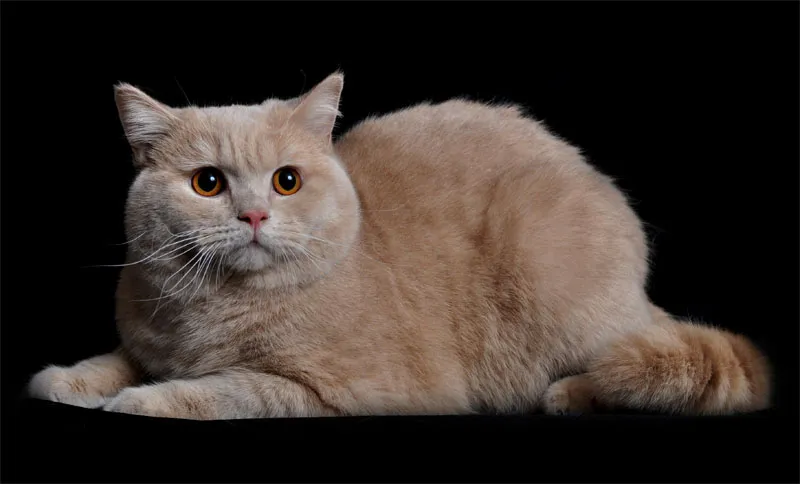
Spike in this picture is a shelter dog that we wanted to photograph for placement. As he had only been at the shelter for a few days, he was very anxious and had a crouched posture with his tail tucked between his legs the whole time. The picture clearly shows how Spike felt inside.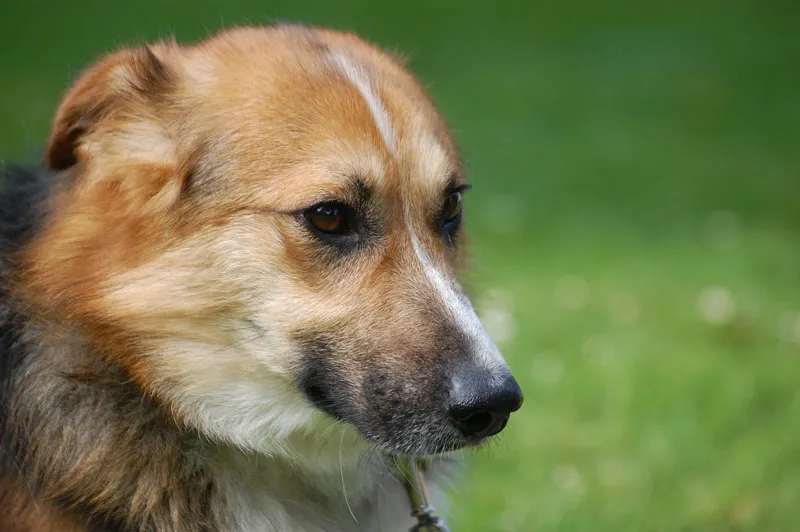
This photo of Spike was taken after he had gotten used to the camera and me. Sometimes it just takes a little time and everything gets better. Spike was anxious, but such a handsome dog that he was placed just two days later.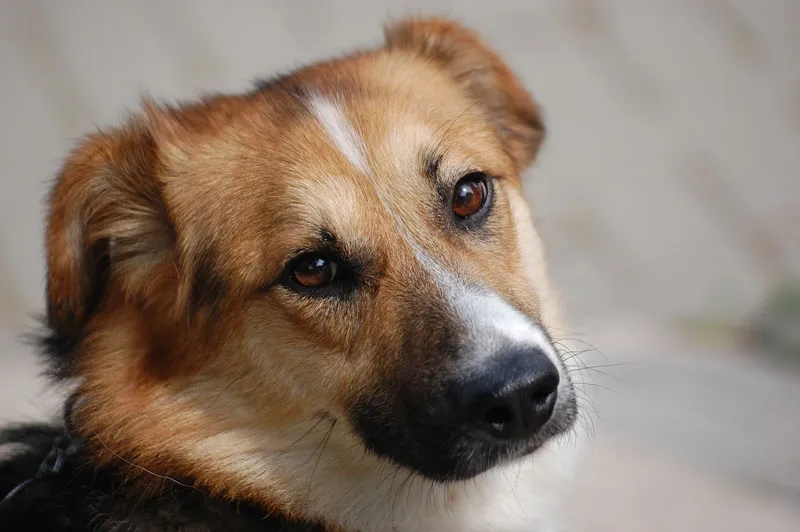
This Ragdoll is the complete opposite. She feels so comfortable in her home environment that she even lies down on her back and poses for the camera.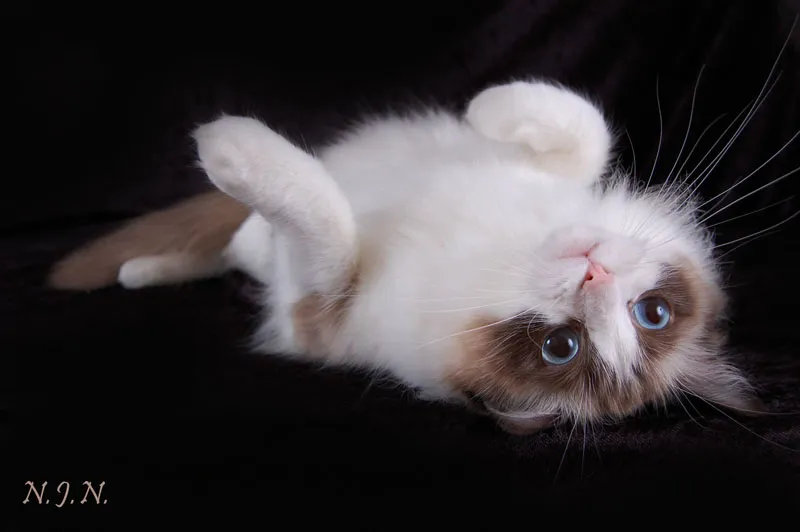
This Maine Coon is also completely relaxed and can be photographed from its most beautiful side. Precisely because these models are so rare, no photographer likes to let them off the table again. Just hold on and enjoy the beauty of the pictures on your hard disk at the end!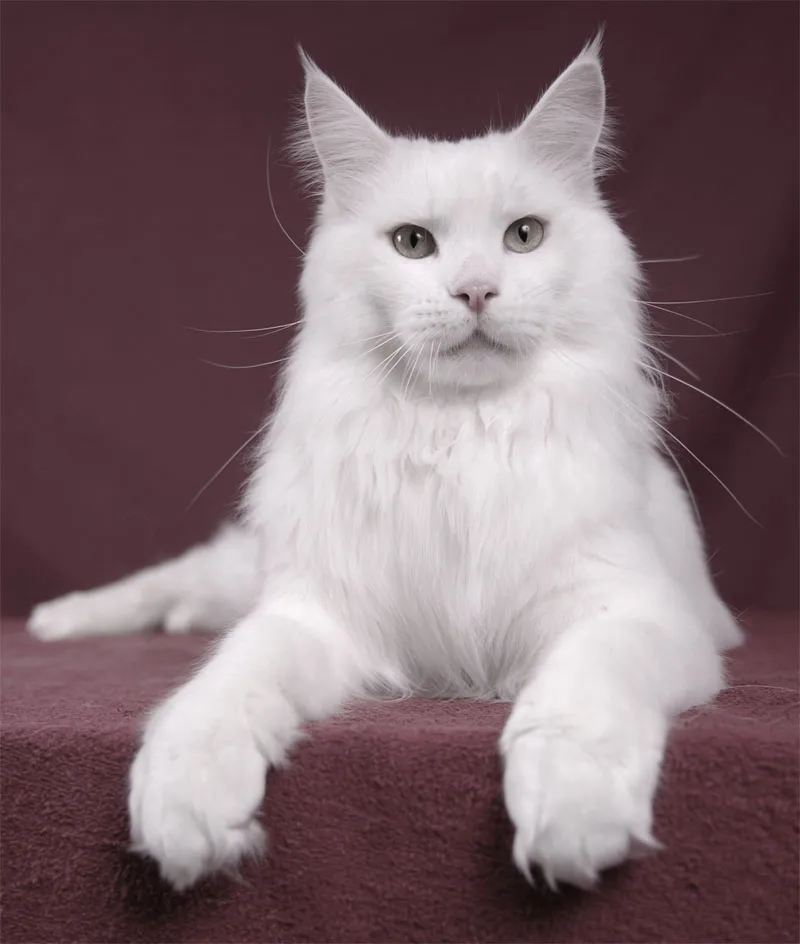
However, nervousness and fear are not necessarily the only factors that play a role with unfamiliar animals. In any case, you should try to make the shoot as pleasant as possible for your four-legged friend. A calm environment without external stress. Small animals and exotic species are usually outside their natural habitat on the photo table.
If they jump on the floor out of fear, they can seriously injure themselves. Cats can also be very nervous animals. An unfamiliar, quick movement or overly intrusive behavior with the camera can cause them to flee. When I do photo shoots at events, I now make sure that the environment is as calm as possible. After all, even exhibition-proven pedigree cats can turn into nervous wrecks on the photo table if there is suddenly a lot of noise in the next booth.
Anyone planning studio shots with dogs should take plenty of breaks into account in advance. Short breaks where water is served and the dog can rest a little. This is because commands are always required during dog shoots. Sit, down, stay. This is also exhausting for the animals.
With small animals and cats, on the other hand, I try to take as many photos as possible as soon as possible after they have settled in. Very few of these animals are made for long shoots. A good cat whisperer may be able to use his powers of persuasion with a toy, but with a bearded dragon this is likely to be a hopeless endeavor. In addition, the shooting time should not be unnecessarily prolonged.
It should always be stopped if the animal shows signs of stress or tension. Don't wait until the animal is literally "fed up"! Anything else is not only unkind to the animal, but can also backfire.
This carrot sweetens the shoot for the little munchkin. It can always be retouched later if necessary.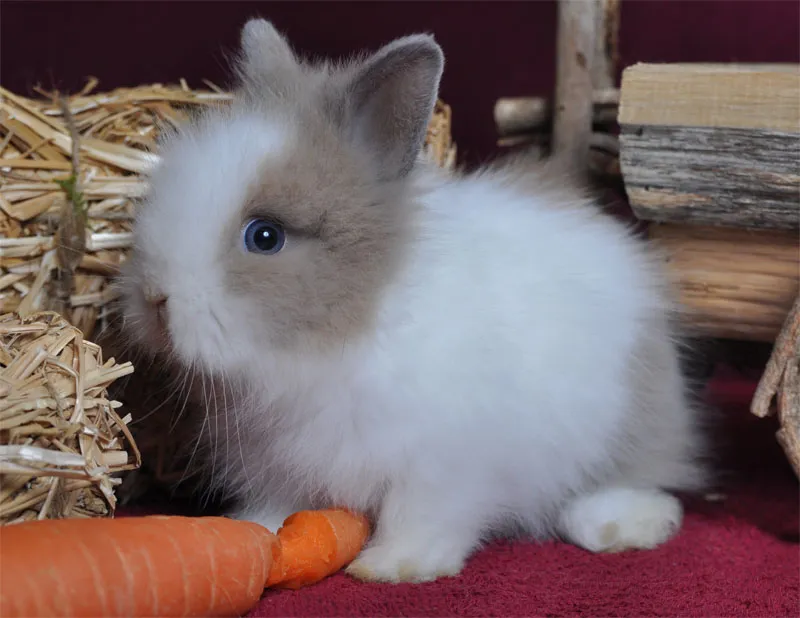
A reward treat at the dog park. But such treats are never a bad idea in a pet photographer's bag either. However, you should ask your owner for permission beforehand.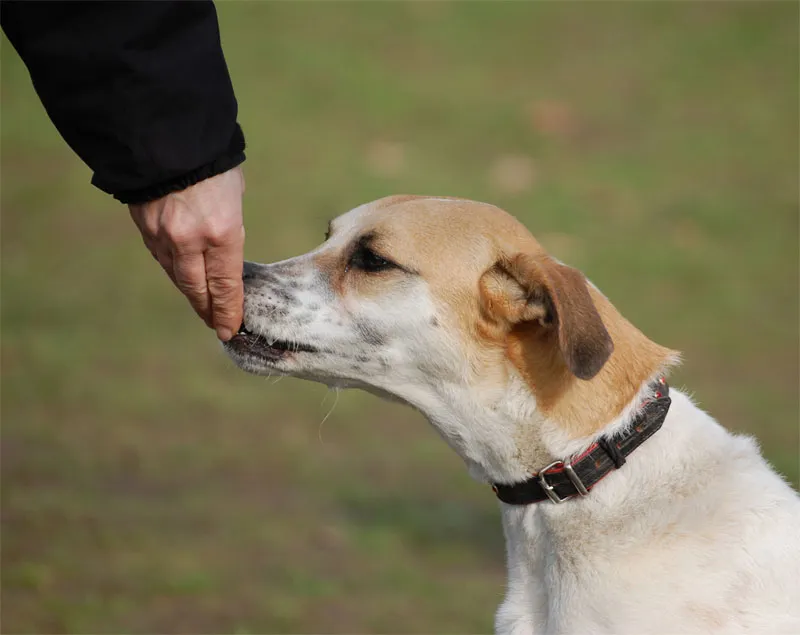
We were able to photograph the hedgehog lady Nuffinchen on the lawn without any problems. She didn't feel threatened by me as I kept my distance, and after a few laps of the lawn she was allowed to return to her safe quarters.
The sections on dogs, cats, horses and small animals go into more detail about the breed-specific features of a shoot.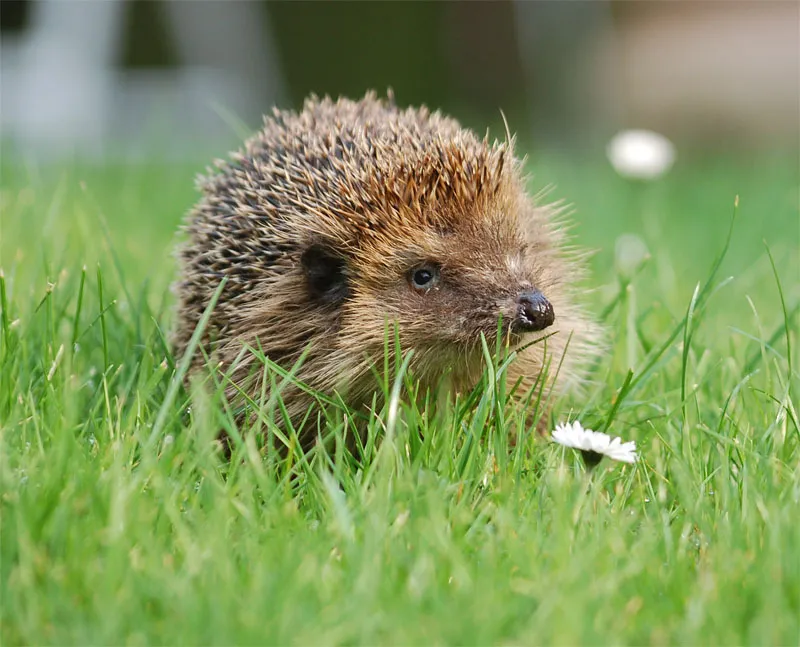
So once you have learned to make yourself invisible and read your pet's mind, we can move on to the second lesson.
b) Woof! Who are you?
The general rule when photographing other animals is: Introduce yourself. How? No different than with two-legged models! Do you have animals yourself? I do! And I expect all people who come into professional contact with my animals, whether vets, physiotherapists or farriers, to "introduce themselves" to my animals and not start their work straight away as if they were resoling a pair of shoes.
With dogs, I even resort to nasty tricks, of course only if the owner agrees. A treat as a greeting and often a new friend is made. Now it looks much friendlier into the camera! Introducing them is not only a question of decency, but also extremely useful for the photographer. An exception may be made for venomous snakes and the like. Handing mice is not everyone's cup of tea, nor does the object look particularly "shapely" in the pictures afterwards.
c) The safety of people and animals
The owner of the four-legged friend can see it immediately and anyone who is generally familiar with dogs, cats and mice will quickly recognize when the animal model is not feeling well. Whether stress, nervousness or tiredness, these are all signs to give the animal a break or even to continue photographing at another time. Otherwise, the animal may justifiably react with aggression and thus give the photographer and his intrusive camera a break.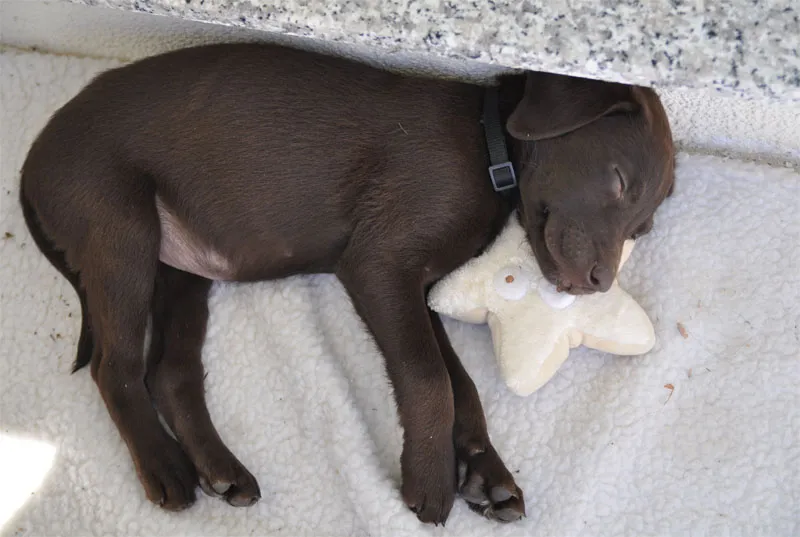
This 8-week-old Labrador has decided that he needs a break. As with all babies, sleep is a key part of his young life. This dog can stay on his feet for a maximum of two hours, after which he needs a sleep break of at least the same length. This must always be planned for and taken into account when shooting with baby animals.
This dog was overcome in the middle of the studio. The previous outdoor shoot must have taken more of a toll on this usually tireless setter than planned. Of course, when the animal models are tired, the pictures are not particularly exciting.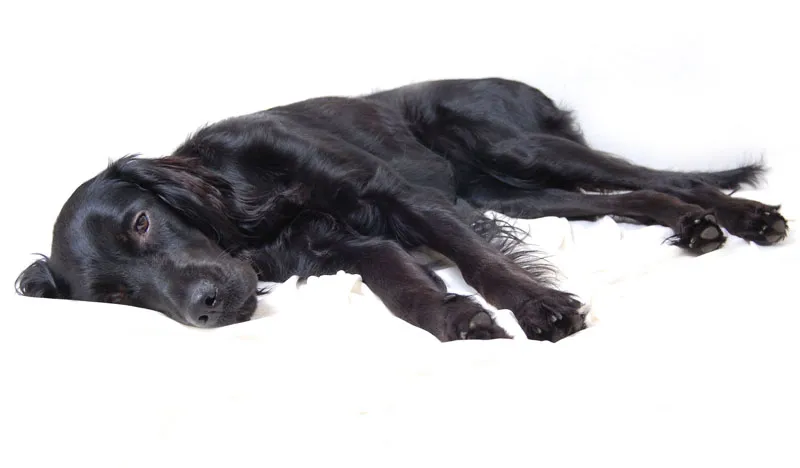
No photographer would want to be the target of this attack. How fortunate that the targeted enemy is only a jet of water!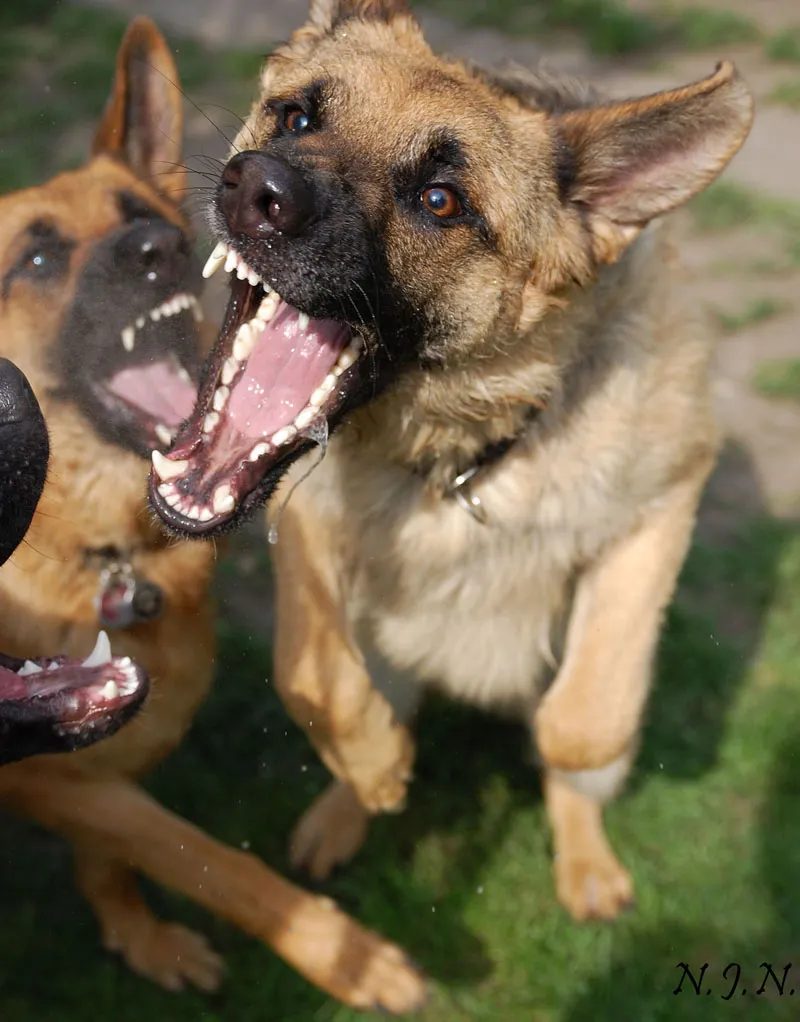
So if you have introduced yourself properly, if necessary, and also pay attention to the mood of the subject, you are halfway there. Nevertheless, there is always a certain risk of accidents for humans and animals, and this should not be forgotten. Every child knows what stressed exotic animals such as snakes, spiders or scorpions can do. But a dog can also strike hard if the photographer teases it for too long, and anyone who has ever had a cat's claws in their face knows that it is best to avoid this attack.
I have also been attacked - admittedly harmlessly. During a large cat shoot, I wanted to add another model to my collection during a short break. A small parrot that had already been introduced to me as "slightly bitchy and misogynistic". He resented the 2 or 3 shots so much that as soon as the opportunity arose, he climbed onto my arm unnoticed and pecked at me. He also gave me a black eye when my own horse got caught in the rope and panicked. Have you ever seen 600 kg galloping away in fear? If so, you know that it's better not to stand with the camera in the direction of escape. Admittedly, there are more dangerous professions, but this one is primarily intended to be fun! There is always a certain residual risk and it would probably be boring without it. Other surprises are always welcome, but none that are detrimental to the health of humans or animals.
TIP: Just ask the pet's owner if there are things it doesn't particularly like. The photographer should be aware of this, especially in the case of shelter animals, which are sometimes pre-disposed and can sometimes grab at certain touches by third parties.
Here we have the cheeky little dog. He didn't like the photo shoot at all.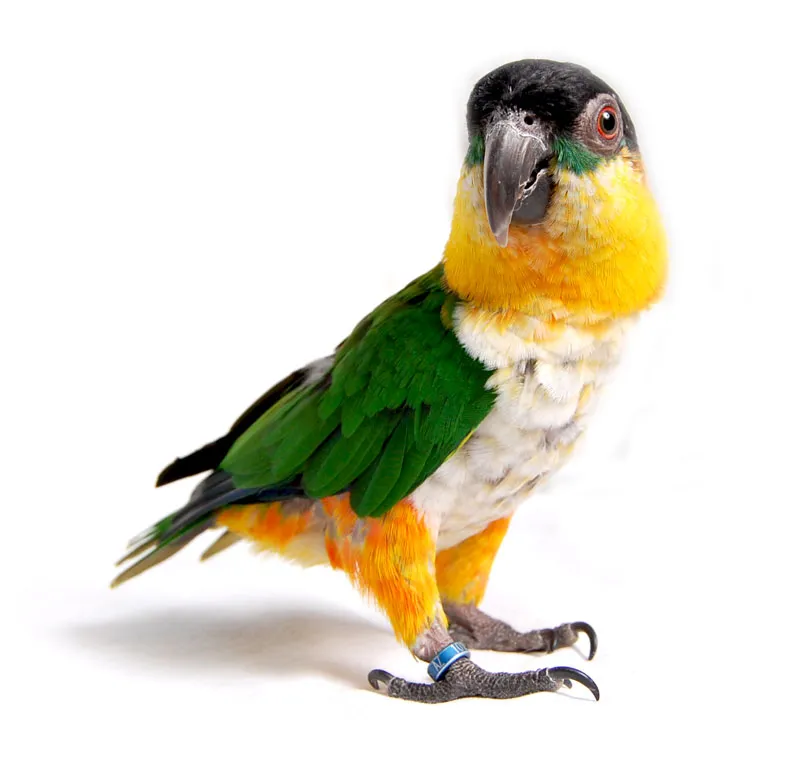
Even if it doesn't look like it: This still very young, cheeky Persian cat really just wanted to play! He is just getting ready to attack his toy, which was dangling next to the camera. You're welcome to take some funny pictures!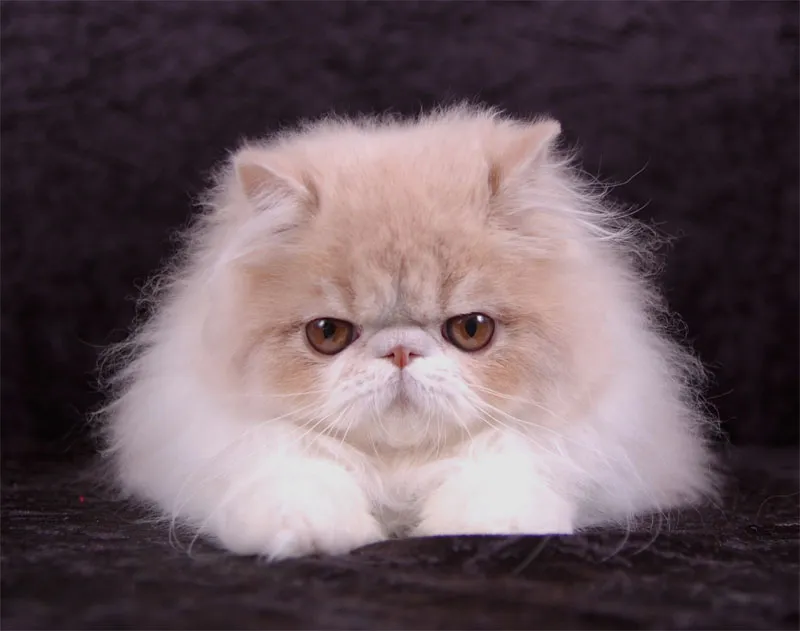
d) Tell me what your dog is like and I'll tell you how the photos will turn out
If you are photographing other people's pets, make a little list of what you would like to ask the pet owner before the shoot. Here are a few suggestions:
-What does the animal not like? What should I avoid?
-Are there typical characteristics, things it likes to do?
-With dogs: What commands does the animal know?
As I will explain later under Shooting preparations, it makes sense to photograph the animal not only according to its breed-specific characteristics, but also in typical habits or in the usual pose. Some dogs love to have their tummies scratched, which can be a great motif!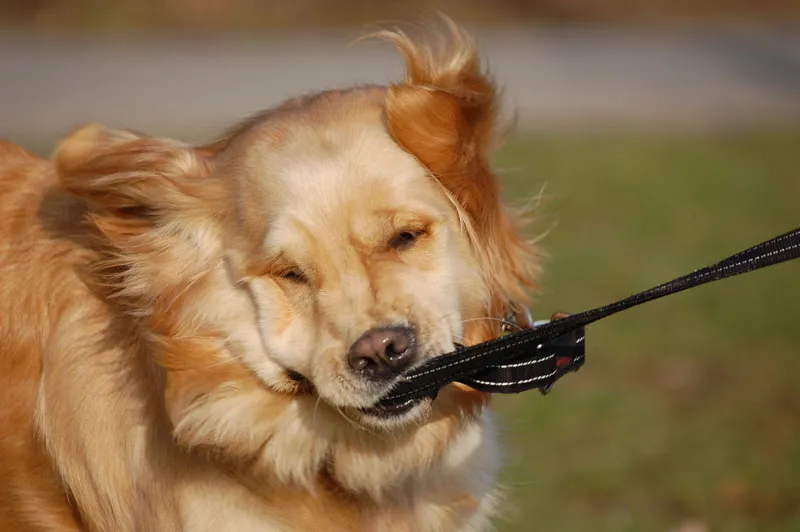
The golden retriever dog Bijou photographed here loves to romp around with her lead - much to the chagrin of her owners - and shake it around wildly. So we simply photographed her doing it.
This young German shepherd Anka also shows her best side.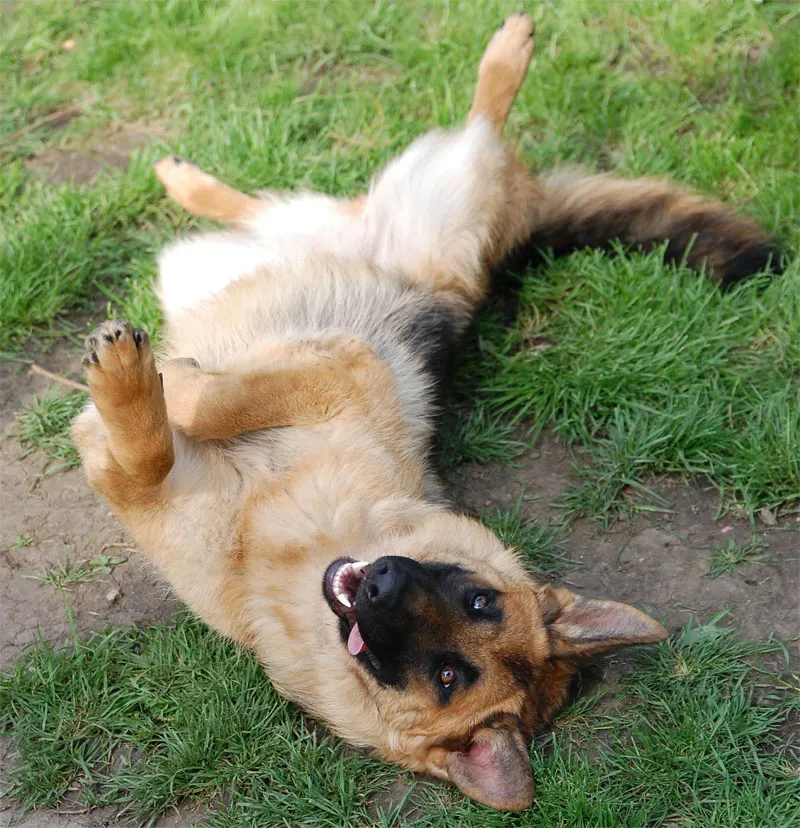
This circus act was created in an attempt to get a picture of a very horse-shy Great Dane with the Haflinger mare Emma. As there is nothing better for Emma than having her belly scratched, she lifts her leg in invitation! Perhaps not a shot for the living room, but still an unusual motif.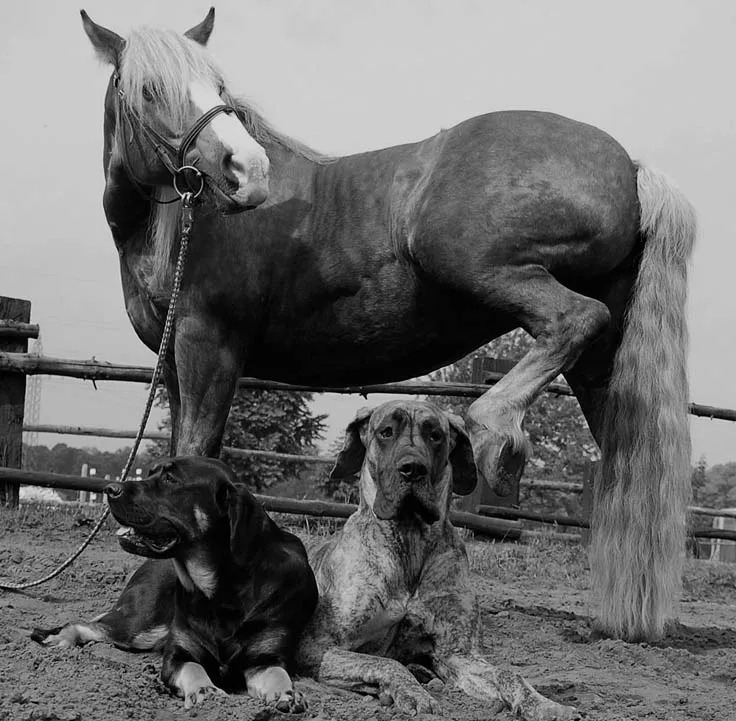
For dog shoots, the question about the level of training can provide information about the required photo time. A dog that follows its master's instructions correctly and quickly is of course much easier to photograph than a dog that knows no commands or follows them poorly. If man's best friend is photographed outdoors, it is always an advantage if the model can move around without a lead and collar, without the owner having to take out newspaper ads afterwards. If this is not possible, there are a few tricks (see outdoor shoots) to take beautiful photos despite the "appendage". Thanks to Photoshop, the photographer can also get rid of some of it.
e) You will need patience ... en masse!
Good things take time, and this is especially true in photography. Because while the master and assistant try to persuade the dog to sit, the photographer's arms get heavier and heavier. If you then make the mistake of giving up prematurely, you may miss the one true moment. So if you don't have muscular upper arms and there's a little fidget in front of you, you should try using a tripod. The photographer also needs to be very, very patient in order to counteract frustration and fatigue. If not, he needs to work on it or turn to landscape photography. You probably haven't quite figured out how to talk to your four-legged models yet, so it's hard to get the next pose. "Now please take the same shot, but without the tongue. Yes, that's great! Now both ears towards me, baby. The right lip down a little and ... Yes, that's it! Stay like that!" It would be nice! As this is not the case, a long time can pass before the desired pictures are in the box.
But the challenge also has a positive side: the more strenuous the shoot and the more difficult the animal is to photograph, the more you will be pleased with the one or other successful shot later on!
If the rag doesn't want to stay in, then the toy has to be in the picture. Still nicer than a long, pink tongue.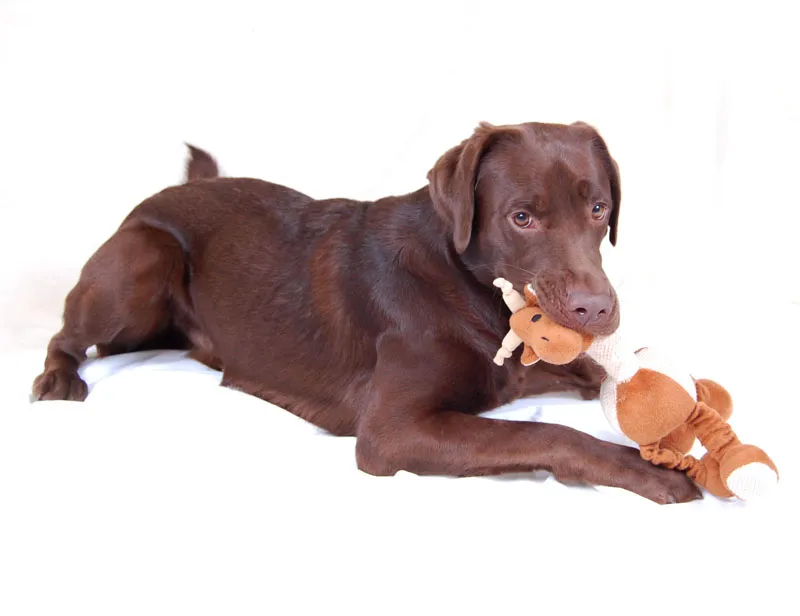
Here is the typical unsightly mouth. The teeth can be seen, the lip is hanging at half eight. In addition to the ears, the mouth and tongue can be decisive for a good or bad dog picture. The beautiful mixed-breed dog Bonnie is not exactly showing her best side here.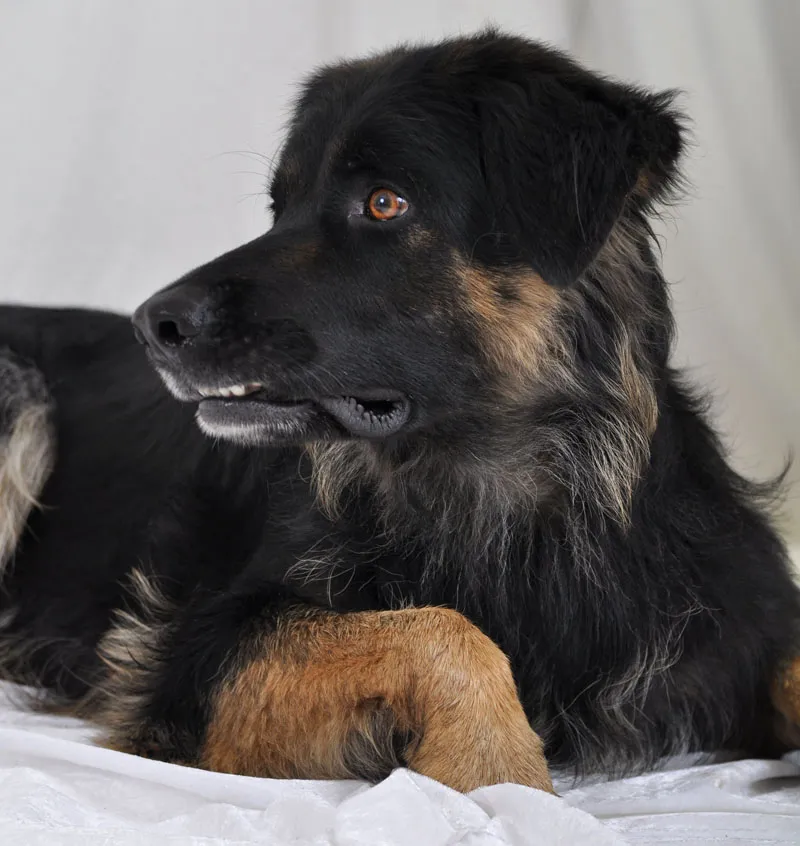
Well, it does work. Tongue in and no more pouting to be seen. Now Bonnie finally shows how pretty she really is! This pleases photographers and masters alike.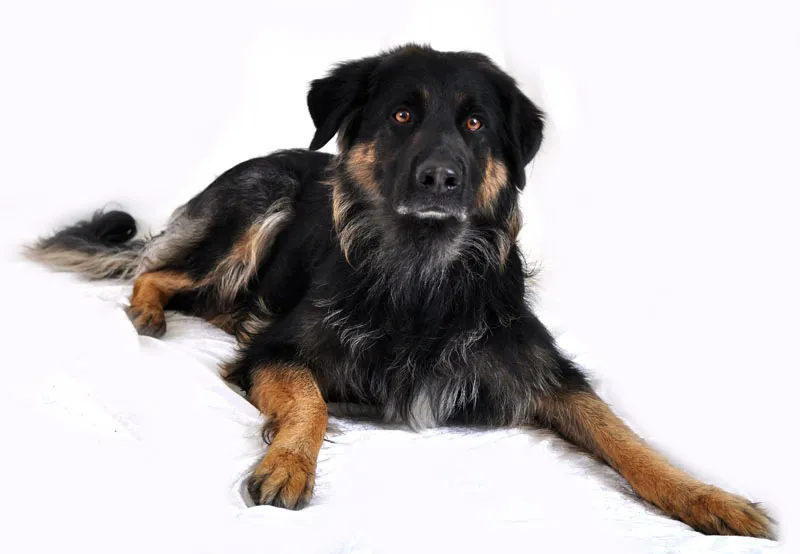
But don't worry, there are plenty of undiscovered mannequins among our four-legged friends. It only takes minutes and the photographer will be delighted with the many beautiful shots.
f) Ingenuity and spontaneity
You should also have plenty of these two virtues. Imagine you have arranged an outdoor shoot and the sky suddenly closes in. You have to spontaneously change your plans if you don't want to postpone the appointment. So always think about alternatives and plan enough time so that nothing goes wrong.
So, let's briefly summarize our introduction: Respect for and love of animals, a large portion of patience and, last but not least, a spark of spontaneity! If you have these three things in your luggage, you are sure to find your perfect shots very soon! I wish you the best of luck!
Nicole Schick
www.tierfotografie-mit-herz.de
